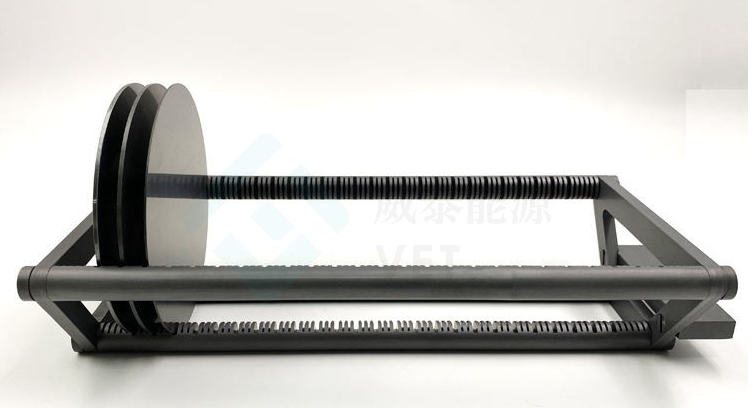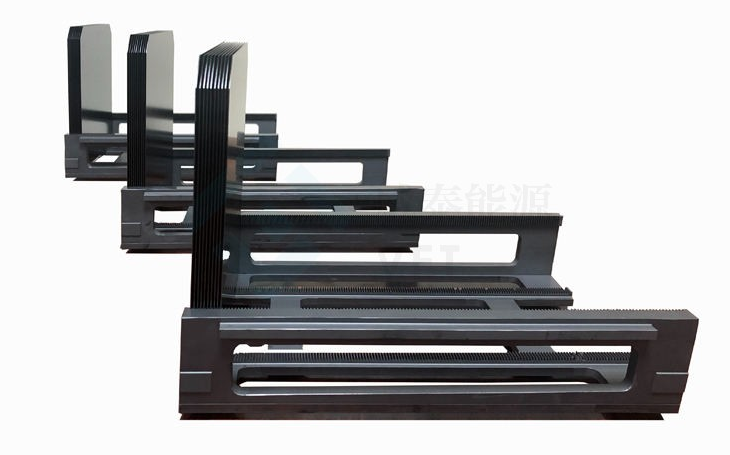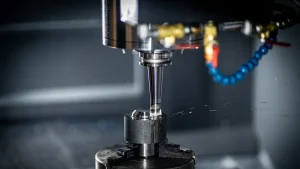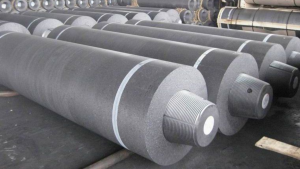ウェーハキャリアトレイは、製造中のデリケートウエハの安全な取り扱いと精密なアライメントを確保することで、半導体業界で重要な役割を果たしています。 半導体技術が進んでおり、革新的なトレイ設計と材料の需要は成長し続けています。 世界的なウエファー・ホルダーの市場は、達するために写し出しました 2024年までのUSD 1.25億この増加の必要性を強調して下さい。 現代のトレイは、高機能な製造プロセスをサポートするため、歪みや静的分散に対する抵抗などの厳しい基準を満たす必要があります。 これらの課題は、進化する半導体アプリケーションの課題を効率性を高め、解決するための業界のコミットメントを反映しています.

要点
- ウェーハキャリアトレイは、製造中の繊細な半導体ウェーハを保護し、安全な保管と正確なアライメントを保証します.
- 現代の設計は、軽量で人間工学的機能を優先し、オペレータの物理的な緊張を減らし、輸送コストを削減します.
- モジュラーとカスタマイズ可能なトレイにより、メーカーはさまざまなウェーハサイズに適応し、効率を高め、複数のトレイタイプの必要性を減らすことができます.
- PFAやABSなどの高度な材料は、耐久性と温度抵抗を改善し、長持ちするトレイや交換コストを削減します.
- V型溝などのイノベーションは、ウェーハのアライメントを高め、処理中に誤差や欠陥のリスクを最小限に抑えます.
- 透明な材料の使用は速い視覚点検を、改善します製造業の品質管理および支持のオートメーション促進します.
- 持続可能性は、環境に優しい材料とエネルギー効率の高い生産方法により、ウェーハキャリアトレイの環境影響を削減する成長する焦点です.
ウェーハキャリアトレイの概要
半導体製造におけるウェーハキャリアトレーの役割
ウェーハキャリアトレイは、半導体業界において重要なツールとして機能します。 さまざまな製造工程を通じて、繊細なウェーハの安全な保管、輸送、および取り扱いを保証します。 これらのトレイは、半導体製造における重要なコンポーネントである薄いシリコンウェーハを保持するように特別に設計されています。 接触や圧力を最小限に抑え、ウェーハを物理的な損傷や汚染から保護します.
製造業者は頻繁にこれらの皿を組み立てるために自然なか伝導性の黒いポリプロピレンのような材料を使用します。 これらの材料は耐久性および静的分散を提供し、ウェーハの完全性を維持するために不可欠です。 また、ウェーハキャリアトレイは、さまざまなサイズでさまざまなウェーハ寸法に対応し、多様な用途に多様に対応しています。 サイダースプリングやキャップのロックなどの特長は、トランジットやストレージ中にウェーハを安全に拘束することにより、更なる機能性を高めます.
ウエハキャリアトレイの役割は、シンプルなストレージを超えて拡張します。 また、加工中に精密なウェーハアライメントにも貢献します。 この精密は、ウェーハが、製造工程の工程を最適な状態に保ち、最終的に半導体製造の効率と品質を向上させることを保証します.
従来のウエファーキャリアトレイデザインへの挑戦
従来のウェーハトレイは、現代の半導体製造における有効性を制限するいくつかの課題に直面しています。 1つの重要な問題は、高度なウェーハ技術の要求を満たすことができないことです。 ウエファーがより薄く、より複雑になるように、古いトレイの設計は適切なサポートおよび保護を提供するのに苦労します。 これは、多くの場合、ウェーハの破損や不整列、生産コストの増加と遅延につながる.
従来のトレイで使用される材料にもう1つの課題があります。 ポリプロピレンのような材料は基本的な耐久性を提供しますが、それらは高性能の製造業の環境のために要求される高度の特性を欠くかもしれません。 例えば、従来の材料は半導体プロセスで共通する極度な温度か抵抗の化学露出に抗しないかもしれません.
古いデザインのカスタマイズの欠如も問題を見ます。 標準化されたトレイは、特定のウエハサイズや形状のユニークな要件に対応していない場合があります。 この制限は、特に特殊なウェーハを扱う場合、製造作業の効率を妨げることができます.
これらの課題に対処するため、業界は革新的な設計と材料にシフトしています。 現代のウエハトレイは、モジュール性、耐久性の向上、人間工学的設計などの高度な機能を組み込んでいます。 これらの改良は、従来のトレイの限界を克服し、半導体製造における優れた性能と信頼性を保証します.
ウェーハキャリアトレイデザインにおける主要トレンド

軽量で人間工学に基づいたデザイン
現代のウエファートレイは、軽量で人間工学に基づいたデザインを優先し、使いやすさと効率性を高めます。 メーカーは、構造の完全性を損なうことなく、トレイの全体的な重量を減らすことに焦点を合わせています。 搬送・搬送時の体負担を最小限にすることで、オペレータのシフト効果を高めます。 軽量設計は、輸送コストを削減し、グローバル半導体サプライチェーンの実用化にも貢献します.
人間工学は、運用効率を向上させる上で重要な役割を果たしています。 容易なグリップのハンドルおよび滑らかな端のようなユーザー フレンドリーの特徴の皿は、ローディングおよび荷を下すプロセスを簡素化します。 これらの設計は、誤ったウエハの損傷の危険性を減らし、より安全な取り扱いを保証します。 たとえば、KA250アドバンストウエファートランスポートキャリアのような高度なトレイは、導電性化合物にオーバーモールドされたポリカーボネート材料を組み込んでいます。 この組み合わせは、重量を減らすだけでなく、機能性を高めるだけでなく、従来のリニアウエハキャリアよりも大きな改善をもたらします.
モジュール性およびカスタム化
モジュラーおよびカスタマイズ可能なウエファーのキャリアの皿のための要求は近年著しく成長しました。 半導体メーカーは、さまざまなウェーハサイズや形状に適応できるトレイが必要です。 モジュラー設計は特定の条件に従って皿を構成することを可能にすることによってこの必要性に対処します。 直径150mm〜300mmのウェーハと、Ø1などの特殊なサイズから6インチまで対応可能.
カスタマイズはサイズ適応性を超えて拡張します。 現代のトレイは、多くの場合、スイダースプリングやロックキャップなどの交換可能なコンポーネントを備えています。 これらのコンポーネントは、接触が最小限に抑えられ、汚染や物理的な損傷のリスクを低減します。 たとえば、マイクロテックウエハキャリアトレイは、薄いシリコンウエハやその他の材料を交換することにより、卓越した汎用性を提供します。 この適応性は、多様な半導体アプリケーションに適した選択肢です.
耐久性と寿命の向上
耐久性はウエハキャリアトレイの設計の重要な要因を残します。 PFAなどのポリマーや、Victrex PEEKTM樹脂に基づく導電性特殊化合物などの先端材料は、トレイ構造に革命を起こしています。 これらの材料は、極端な温度、化学暴露、および機械的ストレスに対する優れた耐性を提供し、厳しい製造環境での長期的信頼性を保証します.
耐久性は、ウェーハキャリアトレイの長寿に直接影響します。 高性能材料のトレースは、より少ない頻繁な交換を必要とし、メーカーのコスト削減をもたらします。 さらに、耐久性のあるトレイは、ストレージと輸送中にウェーハに一貫した保護を提供し、時間をかけて構造の完全性を維持します。 強化されたエッジや帯電防止特性などの特長により、これらのトレイの寿命を延ばし、半導体業界に不可欠な投資を実現しています.
より良いアライメントのためのV字型溝の統合
ウェーハキャリアトレイの設計におけるV字型の溝の統合は、半導体産業における重要な革新として登場しました。 これらの溝は貯蔵および輸送の間に精密な位置を提供することによるウエファーの直線を高めます。 V字型の構造は横方向の動きを最小限にし、ウェーハが確実に所定の位置に残っていることを保障します。 この機能は、マイナーな不整列が欠陥や不効率につながる可能性がある、高度な半導体製造プロセスに特に有益です.
V字型の溝が付いている現代ウエファーの皿は直線の正確さの面の従来の設計を外します。 従来のトレイは、ウェーハが処理中にシフトできるようにする、フラットまたは未定義の表面に依存します。 対照的に、V字型の溝は、ウェーハ用の天然クレードルを作成し、誤差の危険性を減らします。 ウェーハの安全性を高めるだけでなく、手動調整の必要性を最小限に抑えることで、製造ワークフローを合理化します.
半導体ウェーハの複雑性を高めるために、この設計を採用しています。 たとえば、薄く、より複雑なウエハは、損傷を防ぐための精密なサポートが必要です。 V字型の溝は、ウェーハ表面に均等に圧力を分配することにより、この必要性に対処します。 この設計革新は効率を改善し、生産コストを削減する企業の目標と一直線に合わせます.
外観検査用透明材料
透明材料は、ウェーハキャリアトレイの一般的な選択肢となり、視覚検査のための実用的なソリューションを提供します。 これらの材料は、オペレータがトレイからそれらを削除することなく、ウェーハの状態を迅速に評価することができます。 保管・輸送時の品質チェックに必要な時間を減らし、効率性を高めます.
ポリカーボネートおよび他の高度ポリマーはウエファーのキャリアの皿の透明物を達成するために一般に使用されます。 これらの材料は、明確さを維持しながら、必要な強度と耐久性を提供します。 従来の不透明トレイとは異なり、透明設計により、ウェーハのリアルタイム監視を可能にし、汚染や不整列などの問題が速やかに特定されます.
半導体製造における自動化の需要が高まっています。 光学センサーを搭載する自動化されたシステムは、透明なトレイを通して容易にウエハを点検し、品質管理プロセスの正確さそして速度を高めることができます。 このイノベーションは、よりスマートで効率的な製造慣行に向けた業界のシフトと整列します.
機能的な利点に加えて、透明なウェーハキャリアトレイは持続可能性に貢献します。 これらの材料の多くは、半導体製造の環境影響を低減し、リサイクル可能です。 エコフレンドリーと機能性を組み合わせることで、透明トレイは、ウェーハの取り扱いや検査に対する前向きなアプローチを表現しています.
ウェーハキャリアトレイ材料の高度化
PFAなどの先進ポリマーの使用
半導体業界は、ウェーハキャリアトレイの性能を高めるために、PFA(Perfluoroalkoxy alkane)のような高度なポリマーに依存しています。 PFAは例外的な耐薬品性を提供し、処理中にウェーハが過酷な化学物質に遭遇する環境に最適です。 極端な温度に耐える能力は、トレイが高熱製造段階であっても、構造的完全性を維持していることを保証します.
PFAの非スティック特性は、ウェーハ汚染のリスクも低減します。 ウェーハの純度を維持するために重要な粒子の付着を最小限に抑えます。 メーカーは、要求の厳しい条件下で劣化する可能性があるポリプロピレンなどの伝統的な材料によって構成される課題に対処するためにPFAベースのトレイを採用しています。 PFAの統合により、ウェーハキャリアトレイは耐久性と信頼性の高レベルを達成し、業界のニーズの精度と効率性をサポートします.
強度と柔軟性のための複合材料の統合
合成材料は柔軟性の強さと結合することによって革命的なウエファーのキャリアの皿の設計を持っています。 これらの材料は、多くの場合、ポリマーと補強繊維のブレンド、単一材料トレイと比較して優れた機械的特性を提供します。 例えば、コンポジットは、クラックや変形せずに繰り返し機械的ストレスに耐えることができ、長期的な使いやすさを保証します.
複合材料の柔軟性により、トレイはさまざまなサイズや形状のウェーハに対応できます。 この適応性は、多様なウェーハ寸法が一般的である現代の半導体製造において不可欠であることを証明しています。 また、コンポジットトレイは、軽量な構造を特徴とし、オペレータの負担を軽減し、処理効率を改善します.
この領域におけるイノベーションの注目すべき例は、半導体ウェーハストレージデバイス用の特許を強調したネスト可能なトレイの開発です。 これらのトレイは、コンポジット材料を使用して、構造の完全性を維持しながらスペースを節約する積み重ね可能なデザインを作成します。 そのような進歩は、ウェーハ処理における機能的および物流上の課題の両方に対処するための複合体の可能性を示しています.
環境に優しいソリューションのための持続可能な材料の採用
サステナビリティは、ウエハキャリアトレイの設計に重点を置いています。 環境に優しい材料の採用は環境の足跡を減らすために企業の約束を反映します。 再生可能なポリマーと生分解性材料は、グローバルサステイナビリティの目標と整列するトレイを構築するために使用されています.
これらの持続可能な材料は廃棄物を削減するだけでなく、半導体製造に必要な性能基準を維持します。 たとえば、バイオ系ポリマーから成るトレーを導入し、従来の材料に比べ強度と耐久性を両立させるトレイを導入しています。 事業活動の効率化で環境の責任をバランス良くする業界の取り組みをサポートします.
素材の選択に加えて、持続可能な慣行は、製造プロセス自体に拡張されます。 エネルギー効率の高い生産方法と材料廃棄物の削減は、ウェーハキャリアトレイの全体的なエコフレンドリーに貢献します。 持続性を優先することにより、半導体業界は環境に配慮したイノベーションを優先する.
強さおよび温度の抵抗のためのABSの人気
アクリロニトリルのブタジエンのシレン(ABS)は例外的な強さおよび温度の抵抗によるウエファーのキャリアの皿の製造業で重要な牽引を得ました。 この熱可塑性ポリマーは、機械的特性のユニークな組み合わせを提供し、半導体製造の要求環境に理想的な選択です.
ABSは優秀な耐衝撃性を提供しま、皿が割れるか、または変形なしで処理し、交通機関の物理的な圧力に耐えることができることを保障します。 堅牢な構造により、厳しい製造工程であっても、繊細なウェーハを損傷から保護します。 例えば、ABS ベースのトレイは、多くの場合、関与するアプリケーションで使用されます 炭化ケイ素のウエファーのボート そして エピタキシャルウエファーボートウェーハの完全性を維持するために耐久性が重要である場合.
温度抵抗はABSの別の主利点です。 半導体製造は、ウェーハエッチングや蒸着などのプロセス中に高温への曝露を伴います。 ABSは、これらの条件下で構造的完全性を維持し、信頼性の高い性能を保証します。 このプロパティは、特に適しています SiC Wafer Boats極端な熱環境に耐えることができる材料が必要です.
注目すべき特許である「半導体ウェーハなどのトレイの保持」は、耐久性とネスト可能なトレイのデザインの重要性を強調しています。 ABSは、効率的なウェーハストレージと輸送に必要な強度と柔軟性を提供することで、そのような革新における重要な役割を果たしています.
機能的な利点に加えて、ABSは設計汎用性をサポートしています。 製造業者はABSを複雑な形に形成し、補強された端、帯電防止特性およびモジュラー部品のような特徴の皿の作成を可能にします。 これらの強化は、使いやすさを向上させ、トレイの寿命を延ばし、長期的な価値を半導体メーカーに提供します.
ABSの普及率は、コスト効果の高い性能をバランス良くする業界の焦点を反映しています。 強度、温度抵抗、設計の柔軟性を提供する能力は、半導体製造の進化するニーズに対応し、現代のウェーハキャリアトレイに好まれる材料になります.
半導体への影響 製造業
効率と生産性の向上
ウェーハキャリアトレイの設計の進歩により、半導体製造における効率と生産性が大幅に向上しました。 V字型溝やモジュラー部品、合流式ウェーハ処理プロセスなどの機能を備えたモダンなトレイ。 これらの革新はローディング、荷を下すことおよびウエファーを一直線に合わせることのために要求される時間を減らします、製造業者が生産周期を最大限に活用することを可能にします。 たとえば、軽量材料の統合は、オペレータの疲労を最小限にし、より速く、より安全な操作を可能にします.
PFAや複合ポリマーなどの先進材料の使用は、トレイが極端な条件下で構造的完全性を維持していることを保証します。 この信頼性は、高温または化学的に集中的なプロセス中にウェーハの損傷のリスクを低減します。 エラーや不具合を最小化することにより、メーカーは高い歩留まりを達成し、生産性を向上させます。 さらに、透明トレイは、リアルタイムのビジュアル検査を容易にし、品質管理手順を迅速化し、作業効率を向上します.
コスト削減と長期節約
革新的なウェーハトレイ設計により、半導体メーカーのコストを大幅に削減できます。 ABSやVictrex PEEKTM樹脂などの耐久性のある材料は、交換頻度を減らす、トレイの寿命を延ばします。 この長寿は、時間をかけて運用コストを削減します。 例えば、トレイは 炭化ケイ素のウエファーのボート そして エピタキシャルウエファーボート 厳しい製造条件に耐え、頻繁な摩耗および破損なしで一貫した性能を保障します.
軽量で人間工学に基づいたデザインは、コスト効率にも貢献します。 トレイの重量を削減し、特にグローバルサプライチェーンで輸送費を削減します。 さらに、さまざまなウェーハサイズをカスタマイズできるモジュラートレイは、複数のトレイタイプの必要性を排除します。 この適応性は、在庫要件と関連するストレージコストを最小限に抑えます。 高性能トレイに投資することで、ウェーハ保護とアライメントの高い基準を維持しながら、メーカーは長期的な節約を実現します.
サステナビリティ支援 ゴール
半導体業界は、ウェーハキャリアトレイ材料の持続可能性と進歩をますます優先し、この目的に合わせて設計します。 再生可能なポリマーやバイオベースの複合材料などの環境に優しい材料の採用により、トレー生産の環境影響を低減します。 これらの持続可能なオプションは、廃棄物を最小限に抑えるために、グローバルな努力をサポートしながら、製造プロセスを要求するために必要な耐久性と機能性を維持します.
エネルギー効率の高い製造方法は、現代のトレイのエコフレンドリー性をさらに高めます。 例えば、生産の SiC Wafer Boats 廃棄物やエネルギー消費を削減するプロセスを組み込んでいます。 リサイクル可能なポリカーボネートで作られた透明なトレイは、運用効率を向上させるだけでなく、再利用とリサイクルを可能にすることで、持続可能性に貢献します。 半導体業界は、これらのイノベーションを一体化することにより、環境の責任で技術開発を進めるというコミットメントを実証しています.
ウェーハキャリアトレイの未来展望
ウェーハキャリアトレイデザインにおける新興技術
半導体業界は進化し続け、先進技術の開発を推進 ウェーハキャリアトレイ デザイン。 ウェーハの安全性の向上、運用効率の向上、次世代半導体製造の要求に応えるイノベーションを推進しています。 1つの注目すべき進歩は、トレイのデザインにスマートな機能の統合です。 温度、湿度、静電気などの環境条件を監視する組込みセンサーを搭載しています。 リアルタイムデータを提供することで、これらのスマートトレイは、ウェーハ処理とストレージの最適な条件を維持するのに役立ちます.
もう一つの有望な技術は帯電防止コーティングおよび材料の使用を含みます。 これらの進歩は、敏感な半導体デバイスを損傷させる静電気の蓄積を防ぐことを目指しています。 導電性プラスチックや特殊な材料でコーティングされた帯電防止ウェーハトレイは、ウェーハの安全な輸送と保管を保証します。 例えば、トレイは 炭化ケイ素のウエファーのボート そして エピタキシャルウエファーボート これらの特性を組み込んで、ウェーハを保護し、高精度な工程で保護します.
オートメーションは、ウェーハキャリアトレイの将来にも大きな役割を果たしています。 自動処理システムは、ロボットアームとコンベアシステムと互換性のあるトレイが必要です。 メーカーは、アライメントマーカーなどの標準化された寸法と機能を備えたトレイを開発し、シームレスな統合を自動化ワークフローに容易にします。 人間の介入を減らし、エラーを最小限にし、全体的な生産性を高めます.
持続可能な素材の採用により、業界のイノベーションへのコミットメントがさらに強調されます。 再生利用できるポリマーおよび生物ベースの合成物は従来の材料への環境に優しい代わりとして人気を集めます。 廃棄物を削減し、環境の責任を促進するために、グローバルに取り組みます。 持続可能性と機能性を組み合わせることで、次世代のウェーハキャリアトレイは、技術とエコロジーの両方の課題に対応します.
スケーリングイノベーションの課題と機会
ウェーハキャリアトレイの設計におけるスケーリングイノベーションは、課題と機会の両方を提示します。 1つの主要な課題は、高度な機能を備えたコスト効率性のバランスをとることです。 PFAや複合ポリマーなどの高性能材料は、優れた耐久性と機能性を提供しますが、多くの場合、より高い生産コストを伴います。 製造業者は、材料の使用法を最適化し、生産プロセスを合理化し、これらのイノベーションをより広範な市場へアクセスできるようにする方法を見つける必要があります.
カスタム化の要件も課題をポーズ. 半導体メーカーは、特定のウェーハサイズ、形状、および処理ニーズに合わせて要求トレイを要求します。 モジュラー設計は、この必要性に対処しますが、それらは妥当性および信頼性を保障するために精密な工学および品質管理を要求します。 例えば、 SiC Wafer Boats 精密なウエファーの直線を維持している間極端な温度と機械的ストレスに耐える必要があります。 これらの厳格な要件を満たすには、研究開発の継続的な投資が必要です.
これらの課題にもかかわらず、メーカーが革新する大きなチャンスがあります。 より小型で、より複雑な半導体装置のための成長した要求はコンパクトおよび有効な皿の設計のための必要性を運転します。 ウェーハのアライメントを改善し、迅速な外観検査を可能にすることにより、V字型の溝や透明な材料のカッカーなどの機能を備えています。 製造効率を高め、生産コストを削減し、業界リーダーに惹きつける.
自動化へのシフトは、別の機会を提示します。. 半導体設備が自動システムを採用し、ロボットハンドリングに対応したトレーの需要が高まります。 標準化されたデザインとスマート機能を備えたトレイを開発するメーカーは、この進化した市場での重要なプレーヤーとして位置付けています。 さらに、持続可能性に重点を置き、イノベーションの新しい道を開く。 地球環境にやさしい素材とエネルギー効率の高い生産方法を優先する企業は、グローバルな持続可能性の目標に貢献しながら、競争力を高めます.
半導体業界において、ウェーハの搬送トレイは不可欠であり、製造中のウェーハの安全と精度を保証します。 軽量構造、モジュラー性、V字型溝などのトレイ設計の最近の進歩により、作業効率が大幅に向上しました。 PFAやABSなどの先進材料の採用により耐久性が向上し、持続可能なオプションは地球環境にやさしい目標に合わせています。 これらのイノベーションは、コストを削減するだけでなく、業界の成長をサポートし、着実な拡大を維持するために計画しました。 新たな課題を解決し、次世代半導体技術の進化する要求に応えるべく、継続的なイノベーションが不可欠です.
よくあるご質問
ウェーハキャリアトレイは何に使われていますか?
ウェーハキャリアトレイは、半導体ウェーハの安全貯蔵、輸送、および取り扱いに不可欠です。 これらのトレイは、製造工程中の物理的な損傷、汚染、および誤順から繊細なウェーハを保護します。 また、高精度なウェーハ位置決めを実現し、高品質な半導体製造に不可欠です.
「ウェーハトレイは、半導体ウェーハなどの繊細なオブジェクトの保管および輸送のために特別に設計されています。 ツイート この設計は接触および圧力を最小にし、ウエハの完全性を保障します.
ウェーハキャリアトレイの材料選定が重要なのはなぜですか?
素材の選択は、ウェーハキャリアトレイの耐久性、機能性、性能に直接影響します。 PFAおよびABSのような高度材料は極度な温度、化学薬品および機械圧力に優秀な抵抗を提供します。 例えば、, 炭化ケイ素のウエファーのボート そして エピタキシャルウエファーボート 構造の完全性を維持しながら、高い熱環境に耐えることができる材料が必要です.
近代的な材料は、持続可能性の目標をサポートする。 再生可能なポリマーおよび生物ベースの合成物は妥協の性能なしで環境影響を減らします.
V字型の溝がウェーハのアライメントを改善する方法は?
V字型の溝は、保管と輸送中に精密な位置決めを提供することで、ウェーハのアライメントを高めます。 これらの溝は横方向の動きを最小限にし、ウェーハが所定の位置にしっかりと保持されるようにします。 この機能は、マイナーな不整列が欠陥につながる可能性がある高度な製造プロセスのために特に有益です.
従来のトレイは、このような定義された構造を欠くことが多く、ウエハシフトのリスクが増加します。 対照的に、V字型溝は、ウェーハ用の天然クレードルを作成し、安全性と運用効率を改善します.
透明なウェーハキャリアトレイの利点は何ですか?
透明ウェーハトレイは、オペレータがトレイからそれらを削除することなくウェーハを視覚的に検査することができます。 この機能は、品質チェック時に時間を節約し、汚染の危険性を減らします。 ポリカーボネートのような透明な材料は、明快さと耐久性を提供します.
これらのトレイは自動化にも対応しています。 自動システム内の光学センサーは、透明トレイを通して簡単にウェーハを検査し、品質管理プロセスの精度と速度を向上させることができます.
モジュラーウェーハキャリアトレイはカスタマイズをサポートしますか?
モジュラーウエハトレイは、メーカーが特定のウエハサイズや形状にトレイを適応させることを可能にします。 交換可能なコンポーネント、スプライダースプリングやロックキャップなど、ウェーハを最小限の接触で確実に保持します。 この柔軟性は、使用しているものを含む幅広いウェーハ寸法との互換性を保証します SiC Wafer Boats.
カスタム化は複数のトレイタイプの必要性を減らすことによって効率を改善します。 モジュラー設計は、在庫管理を簡素化し、多様な製造ニーズにコスト効率の高いソリューションを提供します.
ウェーハキャリアトレイの設計で持続可能性が果たす役割は?
ウェーハキャリアトレイの設計において、サステナビリティは重要な焦点となっています。 リサイクル可能なポリマーや生分解性コンポジットなどの環境に優しい材料を使用して、環境への影響を削減します。 エネルギー効率の高い生産方法は、これらのトレイのエコフレンドリー性をさらに高めます.
例えば、リサイクル可能なポリカーボネート製の透明なトレイは、作業効率を向上させるだけでなく、再利用とリサイクルをサポートしています。 地球環境に配慮したものづくりを推進し、グローバルに取り組むイノベーション.
ウェーハキャリアトレイの進歩は半導体製造にどのように影響しますか?
ウェーハキャリアトレイの進歩により、効率性を高め、コストを削減し、半導体製造の持続可能性を高めます。 軽量設計やV字型の溝などの特長は、ウェーハの処理プロセスを合理化し、時間を節約し、エラーを削減します。 ABSおよびPFAのような耐久材料は、取り替えの費用を下げる皿の寿命を拡張します.
イノベーションも自動化をサポート ロボットシステムと互換性のあるトレイは、自動化されたワークフローにシームレスな統合を可能にし、生産性を高めます。 これらは、品質の高い基準を維持しながら、半導体製造の複雑性が高まっています.
従来のウェーハキャリアトレイはどのような課題に直面していますか?
従来のウエハトレイは、現代の半導体製造の要求に応えるのに苦労しています。 古い設計は、多くの場合、薄く、より複雑なウエハ、破損や不整列につながる適切なサポートを提供できません。 ポリプロピレンのような材料は高性能の環境のために要求される耐久性に欠けるかもしれません.
標準化トレイもカスタマイズを制限し、専用のウエハサイズや形状に適さない。 これらの制限は、これらの課題に効果的に対処する革新的なデザインや材料への業界のシフトを駆動します.
ウェーハキャリアトレイのデザインの最新トレンドは何ですか?
ウェーハキャリアトレイの設計の最近の傾向は、軽量構造、モジュール性、スマート機能の統合を含みます。 軽量トレイは、物理的な緊張と輸送コストを削減し、モジュール設計により、さまざまなウェーハサイズをカスタマイズできます。 埋め込まれたセンサーが付いているスマートな皿は環境条件を監察し、最適のウエファーの処理を保障します.
視線検査用透明材料の採用とV字型溝の活用により、さらなる機能性を高めます。 これらのトレンドは、半導体製造の進化したニーズに、効率性の向上と対応に注力し、業界の焦点を反映しています.
電子機器の小型化は、ウェーハキャリアトレイの設計にどのように影響しますか?
電子化の傾向は高度のウエファーのキャリアの皿のための要求を運転します。 より小さい、より複雑な半導体装置は精密なサポートおよび保護を提供する皿を要求します。 例えば、, 炭化ケイ素のウエファーのボート そして エピタキシャルウエファーボート これらの繊細なウェーハを妥協することなく対応しなければなりません.
高密度ウエハトレイは、構造的信頼性を維持しながら効率的な空間利用を実現するソリューションとして誕生しました。 これらのイノベーションは、小型化によって構成される課題に対処し、ますます複雑なウエハの安全な取り扱いを保証します.
製品の詳細については、下記までお問い合わせください。 steven@china-vet.com またはウェブサイト: www.vet-china.com.





